how to get rid of carpet beetle
This post may contain references and links to products from our advertisers. We may receive commissions from certain links you click on our website. As an Amazon Associate Rhythm of the Home earns revenues from qualifying purchases.
Please consider making a donation if you like our article. Our website depends on donations from visitors like you!
Share this article:
If you discover strange holes in the carpet or furniture upholstery, that could be a strong indicator of carpet beetles. This insect pest lives up to its name as it tends to feed on carpets but it prefers any type of fabric or clothing. The adult beetles are not actually the main culprits because their larvae are in fact much more damaging. All kinds of organic materials such as leather and wool can be considered an ideal food for carpet beetles.
Although a few carpet beetles won't do a lot of damage, a real infestation can pose some serious risks for curtains, upholstery, and clothing. This is why it's crucial to get rid of them as fast as possible before the situation gets out of hand. Before checking out the best methods of carpet beetle removal, it's worth trying to understand more about the different species of this pest to figure out what you're dealing with more precisely.
1. Types of Carpet Beetles
1.1 Black Carpet Beetle
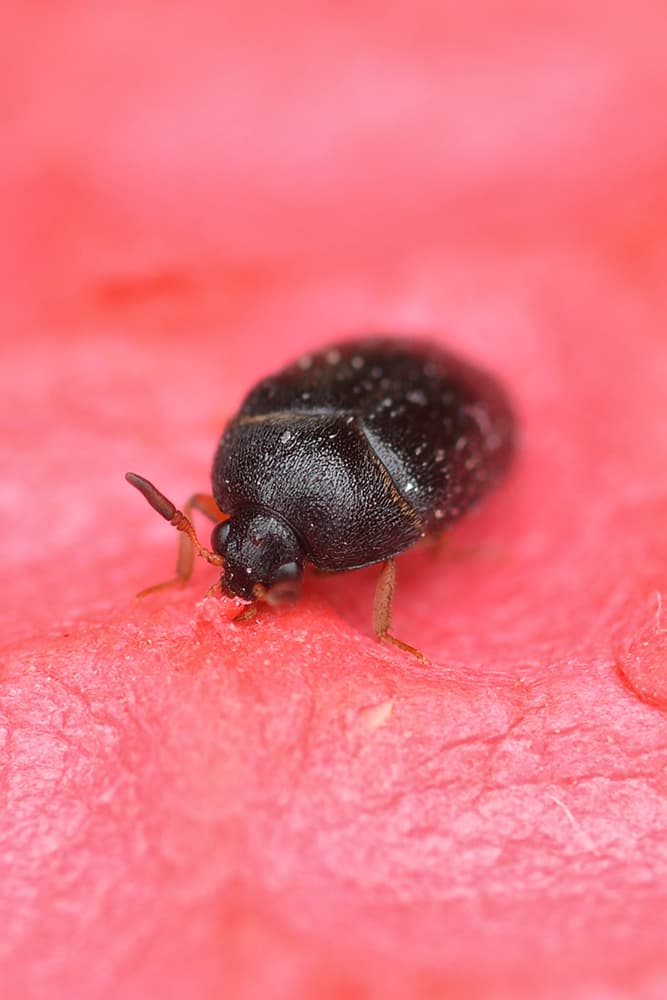
The most common species encountered in the US is the black carpet beetle. It also happens to be the most damaging one. Adults can be recognized by their shiny black appearance. These beetles can be seen outdoors in the spring and early summer. Larvae of black carpet beetles are small but distinctive with their thin bodies full of brushy bristles.
Black carpet beetle larvae can feed on a wide range of products and materials but the most damaging aspect refers to attacking fabrics and articles that contain keratin. These tiny bugs can be discovered in lower areas in closets where they're attracted to wool and other fabrics. As the larvae mature, you may be able to stumble upon them in various areas of the home, even crawling on the walls.
1.2. Varied Carpet Beetle
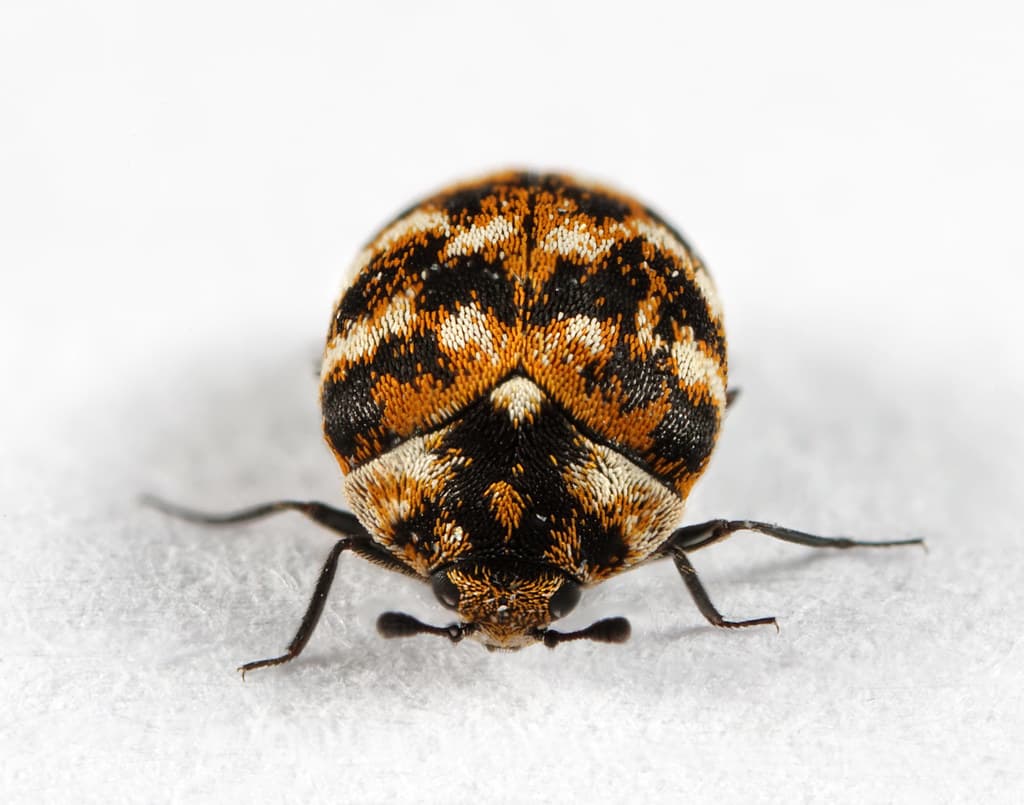
With wide distribution in the country, varied carpet beetles can be distinguished by their smaller, rounded body shape. As the name of this pest suggests, the insect features patterned scales on its wings. The beetles can be recognized quite easily by checking for their specific coloration that includes yellow and white spots.
When it comes to this species' larvae, the most notable detail is that they're scavengers. In the wild, the varied carpet beetle larvae can feed on dead animals but their diet is diverse enough to include all kinds of animal products. In your home, you might find the larvae feeding on carpets, leather hides, feathers, and more.
1.3 Furniture Carpet Beetle
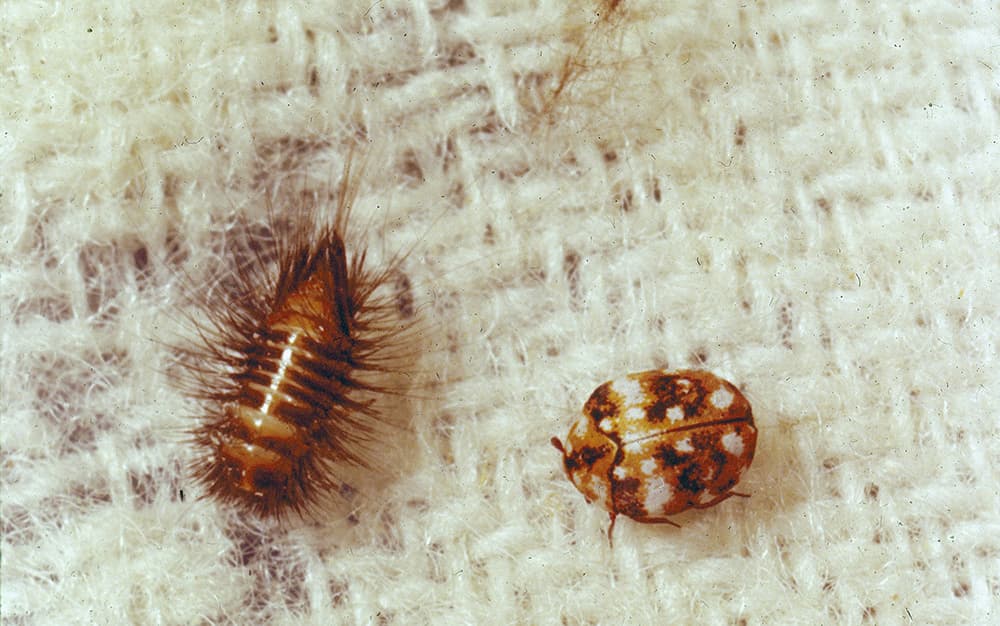
If it seems that your furniture's upholstery gets particularly attacked in your home, it's probably the fault of the furniture carpet beetle. This insect looks similar to the varied species but it has a more striking yellow and white mottling on the back. It's just a general rule because the patterns on the wings can vary a lot but you can usually identify these carpet beetles feeding on upholstering.
The larvae of furniture carpet beetles are oval-shaped featuring small brown hairs. Aside from furniture upholstery, they can feed on hair, fur, silk, and similar materials. Compared to other species, this carpet beetle has a shorter lifespan.
2. Carpet Beetle Infestation Signs
Spotting a carpet beetle infestation early is very hard because the signs can be extremely subtle compared to other pest infestations. Finding bare spots in carpets, clothing, or other items is the most obvious indication that you could have a population of beetles in your home. It's rare to stumble upon alive beetles before noticing the damage they cause to your fabrics.
Carpet beetles tend to stay out of sight but in large infestations, you can find adults close to windows and lights. Larvae may be spotted on some surfaces but you're more likely to find traces of their damage first. Another aspect to look for during your inspection is to pay attention to shed skins left behind by the carpet beetle larvae.
3. Sources of Infestation
By now you may be wondering how do carpet beetles manage to get into your house. As strange as it sounds, this is often a matter of bad luck. The insects can arrive accidentally from various sources such as store-bought flowers or contaminated fabrics. They can also hitch a ride on animal furs. Having a few beetles in your home won't immediately start a serious infestation though.
Carpet beetles need something suitable to feed on to be able to thrive. Their populations can experience alarming growth rates when discovering a dirty carpet. Failing to vacuum on a regular basis will end up providing plenty of food to sustain carpet beetles. This is especially true for varied carpet beetles that prefer eating hair and dead skin.
4. Carpet Beetle Removal Methods

Although carpet beetles are generally harmless, it's obvious why homeowners should take the bugs seriously considering the potential damage caused by the pest to many fabrics and items throughout their homes. The earlier you can spot an infestation the better because you're less likely to require the service of a professional exterminator. Assuming you're not dealing with a very severe infestation, carpet beetles can be eliminated quite effectively with DIY methods like the following:
4.1 Deep Clean Your Home
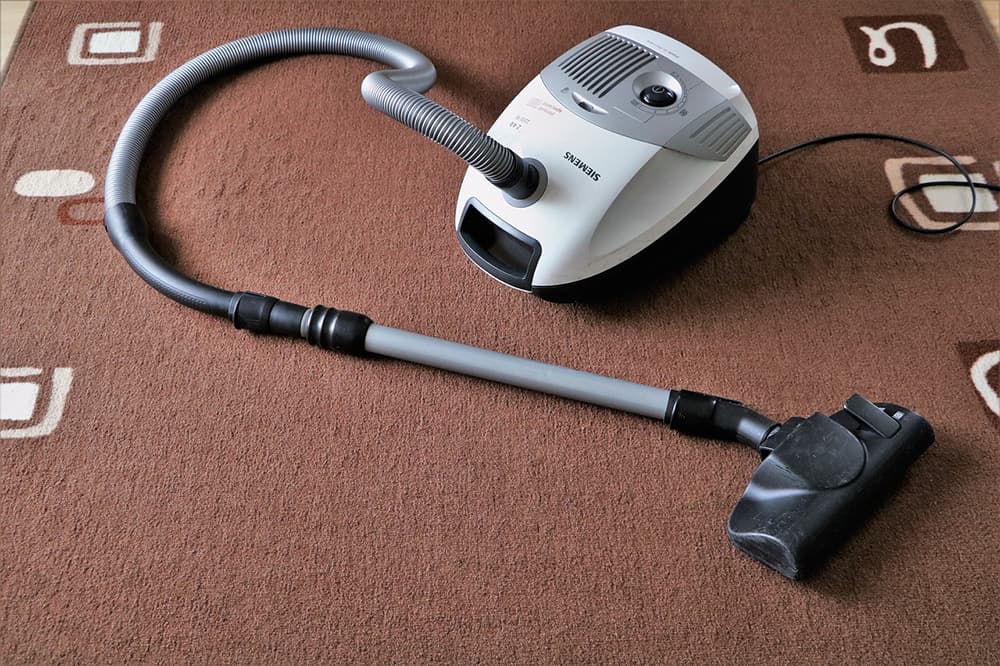
Before you try to decide which insecticide works best on the species of carpet beetles in your home, it's important to do a thorough cleaning job. Start by vacuum every room to get rid of the insects found in the carpets. Don't be content with a proper vacuuming just once. It may be necessary to get through more vacuuming sessions during the next few days. Remember to vacuum upholstered furniture as well. Professional steam cleaning for your rugs is also recommended.
Finding infested clothing items beyond repair means you should throw them away as quickly as possible. You can't battle a carpet beetle infestation without removing these garments because larvae may still be found in them. When it comes to clothes that don't appear damaged, it's strongly advised to wash them all on a hot cycle to be safe.
4.2 Take Out the Insecticide
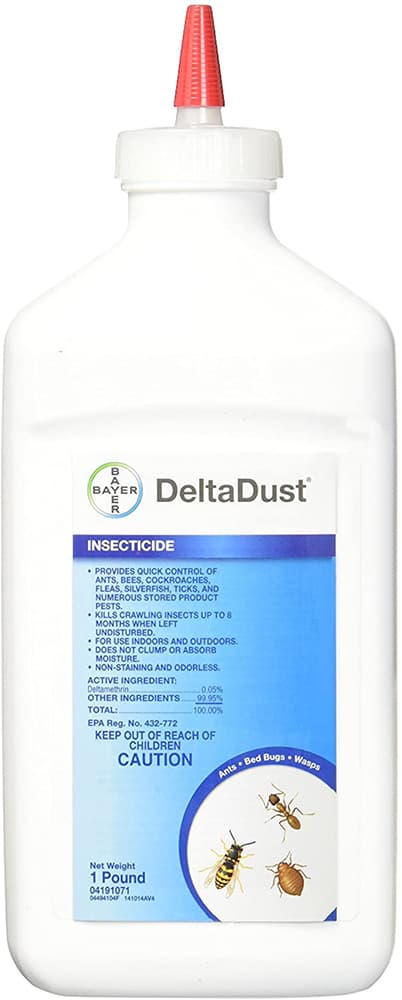
After you've finished sanitizing your entire home, it's time to get your hands on a reliable insecticide that's designed to kill carpet beetles. Some people may not like the idea of using an insecticide for pest control before trying out alternative methods with less harmful side effects. When it comes to carpet beetles, there's really no other solution that can be thorough enough to stop the infestation in your home.
To choose an effective insecticide, make sure it contains deltamethrin, cyfluthrin, or bifenthrin as active ingredients. The Delta Dust insecticide found on Amazon is based on deltamethrin in a very balanced concentration to kill various insect pests easily but without safety risks. This is just an example but regardless of the kind of insecticide you choose, make sure you follow the instructions to the letter. Some carpets can be stained by insecticides so be sure to test the product only on a small area before a full application.
4.3 Use Boric Acid

A strong poison for lots of common pests such as cockroaches and fleas, boric acid also works very well against carpet beetles. It could be seen as a somewhat safer option compared to other insecticides because the acid isn't harmful unless you ingest or inhale a lot of it. Other advantages include the lack of odor and non-staining properties that make it a good solution for carpet beetle pest control.
Check out the Zap-A-Roach boric acid on Amazon that's easy to apply due to its practical powder form. You can also make a spray form of the acid by mixing one tablespoon with two cups of water. Use this solution for upholstery, curtains, and other areas that are harder to reach by the powder.
4.4 Go for Diatomaceous Earth Powder

Although not as effective by itself, diatomaceous earth powder is a natural product that can contribute to the removal of carpet beetles from your home. The desiccant is recommended for dealing with larvae in rugs and closets. Make sure you're careful to avoid inhaling this product because it can be harmful. We recommend wearing a protective face mask during the application of diatomaceous earth powder.
4.5 Try a Fogger

This is a type of insecticide that can handle those hidden carpet beetles that somehow managed to escape your other treatments. The special aerosol application makes it easy for the insecticide to reach female carpet beetles and kill them before they lay eggs. Consider a product such as the Hot Shot No-Mess fogger that's ideal for pest control in cracks and crevices.
5. Preventing Future Infestations
It's quite hard to prevent a future infestation with carpet beetles when considering the multiple ways available for these pests to enter your home. However, that doesn't mean you shouldn't take all the precautions available to minimize the risk of another infestation once you get rid of the beetles. Here are some handy preventive tricks you can try:
5.1 Add Sticky Fly Traps Near Windows

This is a good method to consider for catching any carpet beetles before finding their way inside your house. It can also help if you have a problem with houseflies or fruit flies. Check out this inexpensive and reliable pack of sticky traps from Catchmaster, available on Amazon.
5.2 Place Glue Traps in Closets
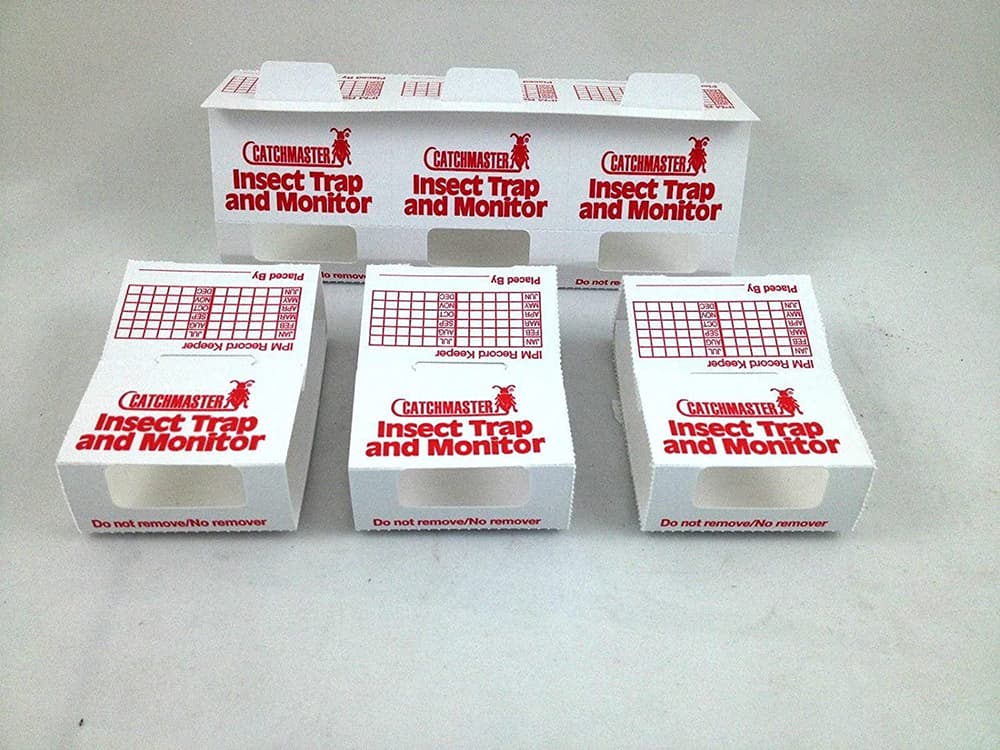
These special traps are useful to have installed in closets or dark areas where carpet beetles can hang out. You can use them to monitor the possible appearance of a new infestation. If there's any activity on them, it's safe to say that you will be prepared earlier to deal with a new carpet beetle infestation.
how to get rid of carpet beetle
Source: https://rhythmofthehome.com/how-to-get-rid-of-carpet-beetles/
Posted by: hamlinevandood1949.blogspot.com

0 Response to "how to get rid of carpet beetle"
Post a Comment